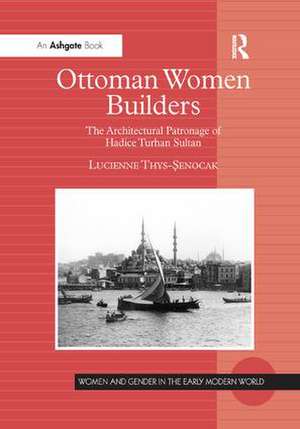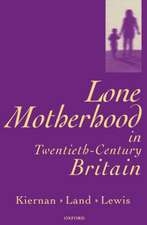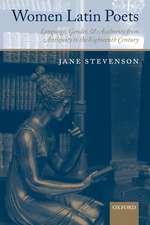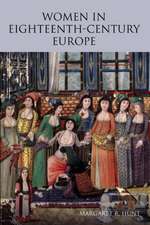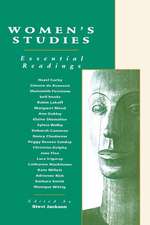Ottoman Women Builders: The Architectural Patronage of Hadice Turhan Sultan: Women and Gender in the Early Modern World
Autor Lucienne Thys-Senocaken Limba Engleză Paperback – 11 noi 2016
| Toate formatele și edițiile | Preț | Express |
|---|---|---|
| Paperback (1) | 338.33 lei 6-8 săpt. | |
| Taylor & Francis – 11 noi 2016 | 338.33 lei 6-8 săpt. | |
| Hardback (1) | 826.01 lei 6-8 săpt. | |
| Taylor & Francis – 26 feb 2007 | 826.01 lei 6-8 săpt. |
Din seria Women and Gender in the Early Modern World
-
 Preț: 225.10 lei
Preț: 225.10 lei - 19%
 Preț: 364.64 lei
Preț: 364.64 lei - 9%
 Preț: 1037.58 lei
Preț: 1037.58 lei -
 Preț: 289.11 lei
Preț: 289.11 lei - 8%
 Preț: 397.62 lei
Preț: 397.62 lei - 18%
 Preț: 1054.71 lei
Preț: 1054.71 lei - 18%
 Preț: 1004.68 lei
Preț: 1004.68 lei - 18%
 Preț: 1054.71 lei
Preț: 1054.71 lei - 18%
 Preț: 1055.06 lei
Preț: 1055.06 lei - 26%
 Preț: 764.20 lei
Preț: 764.20 lei - 26%
 Preț: 764.20 lei
Preț: 764.20 lei - 18%
 Preț: 1001.84 lei
Preț: 1001.84 lei - 18%
 Preț: 1000.27 lei
Preț: 1000.27 lei - 25%
 Preț: 497.08 lei
Preț: 497.08 lei - 18%
 Preț: 1000.27 lei
Preț: 1000.27 lei -
 Preț: 369.73 lei
Preț: 369.73 lei - 18%
 Preț: 1056.63 lei
Preț: 1056.63 lei - 28%
 Preț: 826.01 lei
Preț: 826.01 lei - 18%
 Preț: 1053.92 lei
Preț: 1053.92 lei - 31%
 Preț: 765.84 lei
Preț: 765.84 lei - 28%
 Preț: 819.48 lei
Preț: 819.48 lei - 18%
 Preț: 1113.63 lei
Preț: 1113.63 lei - 31%
 Preț: 767.07 lei
Preț: 767.07 lei - 31%
 Preț: 766.99 lei
Preț: 766.99 lei - 18%
 Preț: 1058.69 lei
Preț: 1058.69 lei -
 Preț: 369.73 lei
Preț: 369.73 lei - 16%
 Preț: 234.90 lei
Preț: 234.90 lei - 18%
 Preț: 1061.81 lei
Preț: 1061.81 lei - 31%
 Preț: 766.85 lei
Preț: 766.85 lei - 18%
 Preț: 1060.25 lei
Preț: 1060.25 lei - 28%
 Preț: 735.34 lei
Preț: 735.34 lei - 18%
 Preț: 1000.27 lei
Preț: 1000.27 lei - 18%
 Preț: 1061.81 lei
Preț: 1061.81 lei - 18%
 Preț: 1061.06 lei
Preț: 1061.06 lei - 28%
 Preț: 876.07 lei
Preț: 876.07 lei - 18%
 Preț: 1064.70 lei
Preț: 1064.70 lei - 18%
 Preț: 1107.61 lei
Preț: 1107.61 lei - 28%
 Preț: 737.63 lei
Preț: 737.63 lei - 18%
 Preț: 1068.15 lei
Preț: 1068.15 lei - 18%
 Preț: 1061.06 lei
Preț: 1061.06 lei - 18%
 Preț: 1000.76 lei
Preț: 1000.76 lei - 26%
 Preț: 819.84 lei
Preț: 819.84 lei - 18%
 Preț: 1109.18 lei
Preț: 1109.18 lei - 28%
 Preț: 821.53 lei
Preț: 821.53 lei - 18%
 Preț: 1000.27 lei
Preț: 1000.27 lei - 28%
 Preț: 827.75 lei
Preț: 827.75 lei - 18%
 Preț: 1122.62 lei
Preț: 1122.62 lei
Preț: 338.33 lei
Preț vechi: 401.86 lei
-16% Nou
Puncte Express: 507
Preț estimativ în valută:
64.75€ • 67.35$ • 53.45£
64.75€ • 67.35$ • 53.45£
Carte tipărită la comandă
Livrare economică 14-28 aprilie
Preluare comenzi: 021 569.72.76
Specificații
ISBN-13: 9781138264229
ISBN-10: 1138264229
Pagini: 346
Dimensiuni: 152 x 229 mm
Greutate: 0.45 kg
Ediția:1
Editura: Taylor & Francis
Colecția Routledge
Seria Women and Gender in the Early Modern World
Locul publicării:Oxford, United Kingdom
ISBN-10: 1138264229
Pagini: 346
Dimensiuni: 152 x 229 mm
Greutate: 0.45 kg
Ediția:1
Editura: Taylor & Francis
Colecția Routledge
Seria Women and Gender in the Early Modern World
Locul publicării:Oxford, United Kingdom
Cuprins
Contents: Introduction; From concubine to Valide: Turhan Sultan's rise through the harem hierarchy; Ottoman women/other women; Defending the Dardanelles: the fortress of Seddülbahir and Kumkale and the legacy of Turhan Sultan; Building the capital: the Yeni Valide mosque complex of Istanbul; The pillar of the state: architecture, agency and self representation; Glossary; Appendices; Bibliography; Index.
Notă biografică
Lucienne Thys-Senocak is Assistant Professor in the History Department at Koç University, Istanbul, Turkey. She also teaches in the graduate program of Anatolian Civilizations and Cultural Heritage Management at the university and is currently directing the restoration project of Hadice Turhan Sultan's Ottoman fortress at Seddülbahir, located on the Gallipoli Peninsula in Turkey.
Recenzii
'Painstakingly and exhaustively researched ... the archival work and architectural analysis are first-rate; and the fieldwork on the two military installations must have been a heroic achievement. The arguments are wholly persuasive and are presented in clear, elegant prose that manages to avoid trendy jargon... The author is clearly comfortable with the intricate world of Ottoman court culture and still poorly known architectural history. I believe the book will provoke a lively debate ... This study is novel, original, timely, and important-a superb achievement.' Heghnar Watenpaugh, University of California, and author of The Image of an Ottoman City
'Lucienne Thys-Senocak has given us a fascinating study of architectural patronage by Hadice Turhan Sultan, mother of Sultan Mehmed IV. Through her fortifications on the Dardanelles and her mosque and market in the commercial heart of Istanbul, this remarkable woman advanced the strength and piety of the empire. Hidden from public view, she proclaimed to the world her own presence and power. An eye-opening comparison with patronage in western Europe, Ottoman Women Builders reveals unexpected possibilities in the lives of elite women in the seventeenth century.' Natalie Zemon Davis, Henry Charles Lea Professor of History Emeritus at Princeton University and author of Trickster Travels: A Sixteenth-Century Muslim Between Worlds
'Ottoman Women Builders was written with a broad audience of early modern scholars and students in mind. Its clear prose and helpful translations, together with a clearly organized text, makes an otherwise specialized topic accessible to various disciplines... [It] is an important contribution to the growing field of Ottoman studies, although nonspecialists will find it equally valuable in its myriad uses as an important tool for comparative studies. Thys-Senocak's work will be a valuable text for students and specialists of European history, art and architecture, women's studies, military history, and Islamic history, art, and architectural history at large.' Renaissance Quarterly
'This book represents a major contribution to the study of imperial female patronage and to architectural history as a whole.' Journal of The Society of Architectural Historians
'Lucienne Thys-Senocak has given us a fascinating study of architectural patronage by Hadice Turhan Sultan, mother of Sultan Mehmed IV. Through her fortifications on the Dardanelles and her mosque and market in the commercial heart of Istanbul, this remarkable woman advanced the strength and piety of the empire. Hidden from public view, she proclaimed to the world her own presence and power. An eye-opening comparison with patronage in western Europe, Ottoman Women Builders reveals unexpected possibilities in the lives of elite women in the seventeenth century.' Natalie Zemon Davis, Henry Charles Lea Professor of History Emeritus at Princeton University and author of Trickster Travels: A Sixteenth-Century Muslim Between Worlds
'Ottoman Women Builders was written with a broad audience of early modern scholars and students in mind. Its clear prose and helpful translations, together with a clearly organized text, makes an otherwise specialized topic accessible to various disciplines... [It] is an important contribution to the growing field of Ottoman studies, although nonspecialists will find it equally valuable in its myriad uses as an important tool for comparative studies. Thys-Senocak's work will be a valuable text for students and specialists of European history, art and architecture, women's studies, military history, and Islamic history, art, and architectural history at large.' Renaissance Quarterly
'This book represents a major contribution to the study of imperial female patronage and to architectural history as a whole.' Journal of The Society of Architectural Historians
Descriere
An examination of the historical figure and architectural patronage of Hadice Turhan Sultan, this study shows how a queen mother from the Ottoman court shaped the political and cultural agenda of the empire during the latter half of the seventeenth century. Lucienne Thys-Senocak demonstrates how Turhan Sultan, through her generous patronage of architectural works-including a large mosque, a tomb, a market complex in Istanbul, and two fortresses at the entrance to the Dardanelles-legitimated her new political authority as a valide, or queen mother. Based on archival research and archaeological fieldwork, this study makes original contributions to current debates in the fields of art history, cultural history and gender studies.
